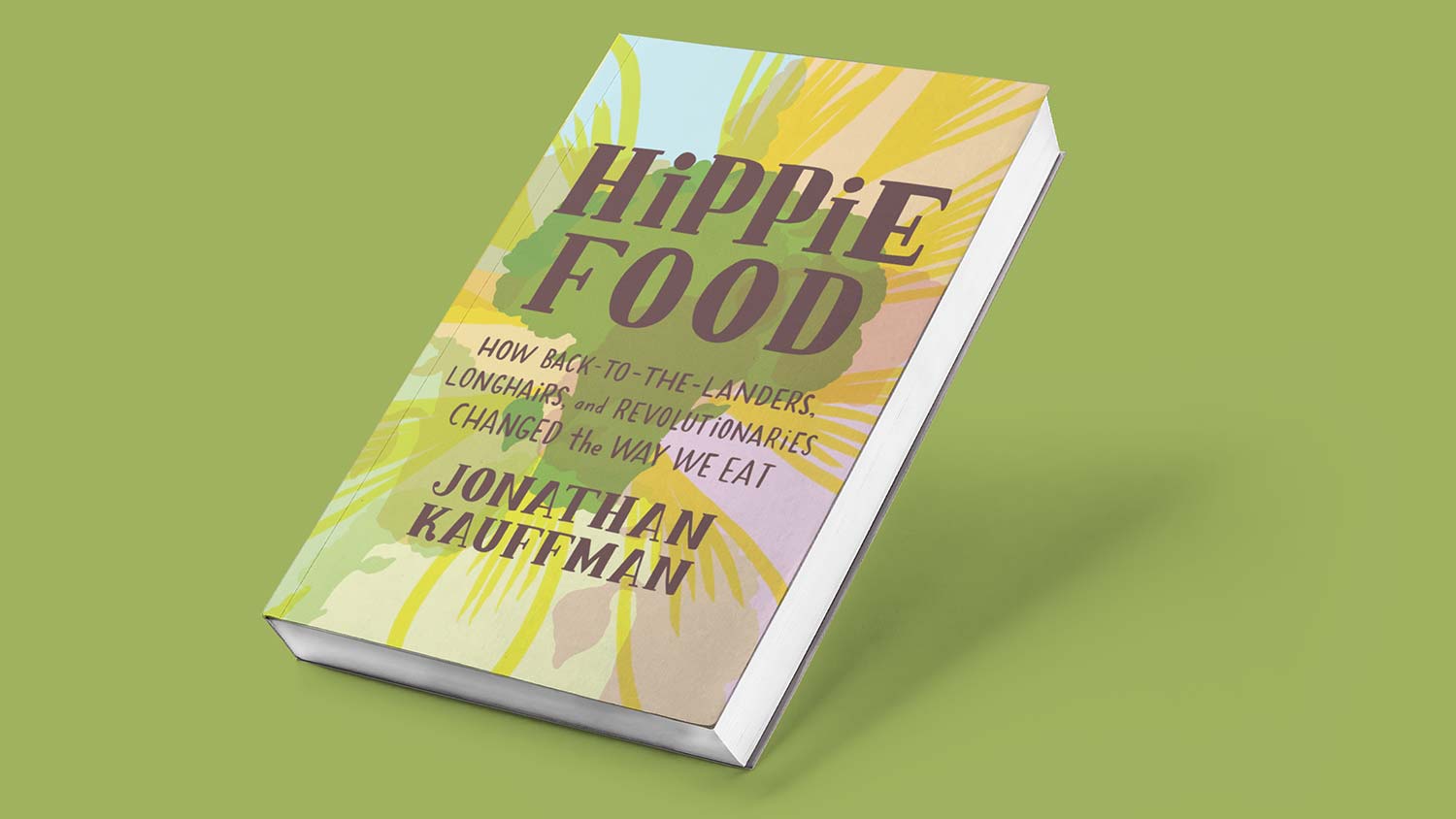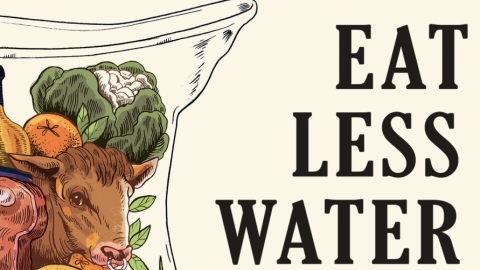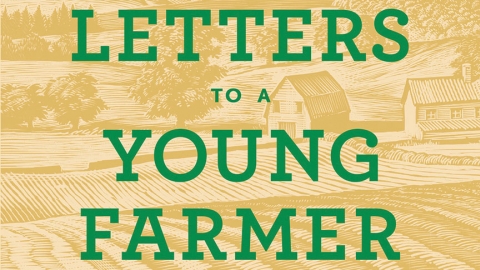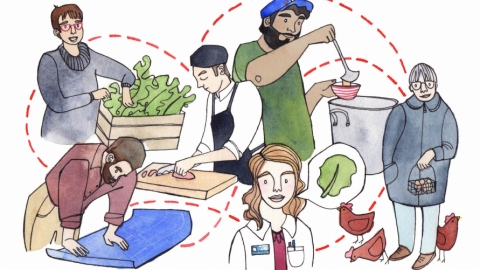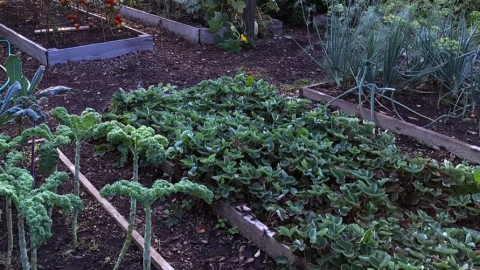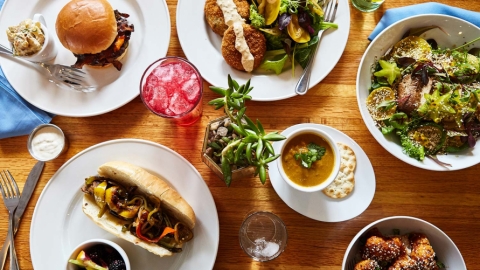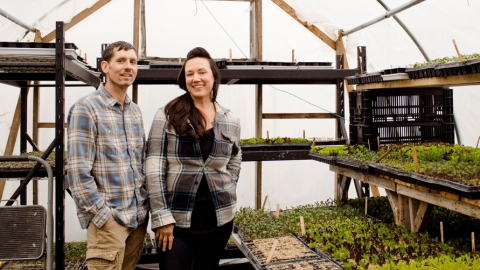“Hippie Food” follows the 1960s roots of the local food movement
As I mixed the oats and bread crumbs into the mushrooms and onions, stirred in the organic eggs and patted out the veggie burgers, I thought about Hippie Food, Jonathan Kauffman’s deep dive into the counterculture of the 1960s and 1970s and its remarkable impact on American food and cooking.
Kauffman’s book changed the way I understood my own diet, from my former vegetarianism to my pursuit of homemade and locally sourced food. And it made me crave things that I hadn’t eaten in years, like brown rice smothered with nutritional yeast gravy. (It’s tasty, I swear!) But more than that, it satisfied a hunger for a piece of American history that I didn’t know I had, like a meal that begins with a nibble and ends up a feast.
Hippie Food, it turns out, is personal for me, and not just because I grew up eating hand-kneaded loaves from the Tassajara Bread Book. I devoured Hippie Food because the people Kauffman writes about—free thinkers, community builders, social and environmental activists, war resisters and peacemakers—are the generation who raised me. These are not the dopey and dirty stereotypes that the word hippie often conjures; to me, the hippies Kauffman writes about are heroes. If you care about how your food is produced and where it comes from, Kauffman’s book will make plain why they should be your heroes as well.
It can be hard, Kauffman says, to believe just how revolutionary an avocado and sprouts sandwich—or a mushroom burger—was in the late 1960s. But for young people in the 1960s and 1970s, including Kauffman’s parents in Elkhart, IN, hippie foods such as meat alternatives, whole wheat bread and brown rice represented a fundamental break with the dominant culture.
They were, he explains, a “collective effort to come up with a healthier, more environmentally responsive, everyday cuisine,” a charge that was personally and politically transformative, as well as economically radical in its rejection of capitalist values. Hippie food, Kauffman reveals, was not just a byproduct of the counterculture, it was an essential nexus for remaking culture, politics and economics—changing the world from the ground up.
Hippie Food begins, not unexpectedly, in California, where Kauffman, a reporter for the San Francisco Chronicle food section, traces the prehistory of the movement in the early-to-mid 20th century quest for health, beauty and spirituality through diet, then moves to Boston in the early 1960s (epicenter of macrobiotics) before circling back to California and the social and political ferment raised by whole wheat bread in the late 1960s. Like the hearty loaves Kauffman describes, this section of the book is dense, but fortifying, made digestible—and at times delectable—by a deft hand that kneads together disparate ingredients into a compelling whole.
Readers might be surprised by the regional diversity of the book’s subsequent chapters—among the most engaging and entertaining—which document:
- The emergence of tofu as a force for self-sufficiency and liberation (from Berkeley to Tokyo to the Farm commune in Tennessee).
- The back-to-the-land movement and the growth of organic agriculture (Vermont).
- The roots and impact of vegetarian cooking (Minneapolis).
- The genesis of food cooperatives and the natural foods industry (Ann Arbor, MI, and Austin).
In an interview, Kauffman told me that he was initially unaware of the role that Midwesterners and others outside California and the urban East Coast played in the hippie food movement. In fact, one question that motivated his book was, “How did I grow up eating this food in a place like Elkhart?”
The answer, as Kauffman tells it, is that his family was inspired by the 1976 More-With-Less Cookbook by Doris Janzen Longacre, a graduate of Goshen College and Goshen Biblical Seminary. More-With-Less, commissioned by the Mennonite Central Committee, was, he observes, a response to Francis Moore Lappé’s groundbreaking best-seller, Diet for a Small Planet, which, as Kauffman details in Hippie Food, gave readers a framework and an action plan for understanding how our food choices impact the broader world. Shopping and home cooking, in this view, were not just chores, but “political acts, hopeful acts” that could change the world.
In Michiana, as in countless other communities across the U.S., the legacy of hippie food lives on in food co-ops, farmers markets and community-supported agriculture subscriptions. But it’s also on our grocery shelves, from everyday staples like yogurt and granola to the proliferation of organic everything. It’s there in the soymilk in your coffee, in your pot of lentils and even in your avocado toast.
Without the counterculture, many of the foods we eat today, and, in all likelihood, the local food movement as we know it (let alone Edible magazines), would not be a part of our lives. And I certainly wouldn’t be serving my family mushroom burgers for supper.
My kids might tell you otherwise, but that’s a world that would be a whole lot less delicious.


